NACSSA in the News
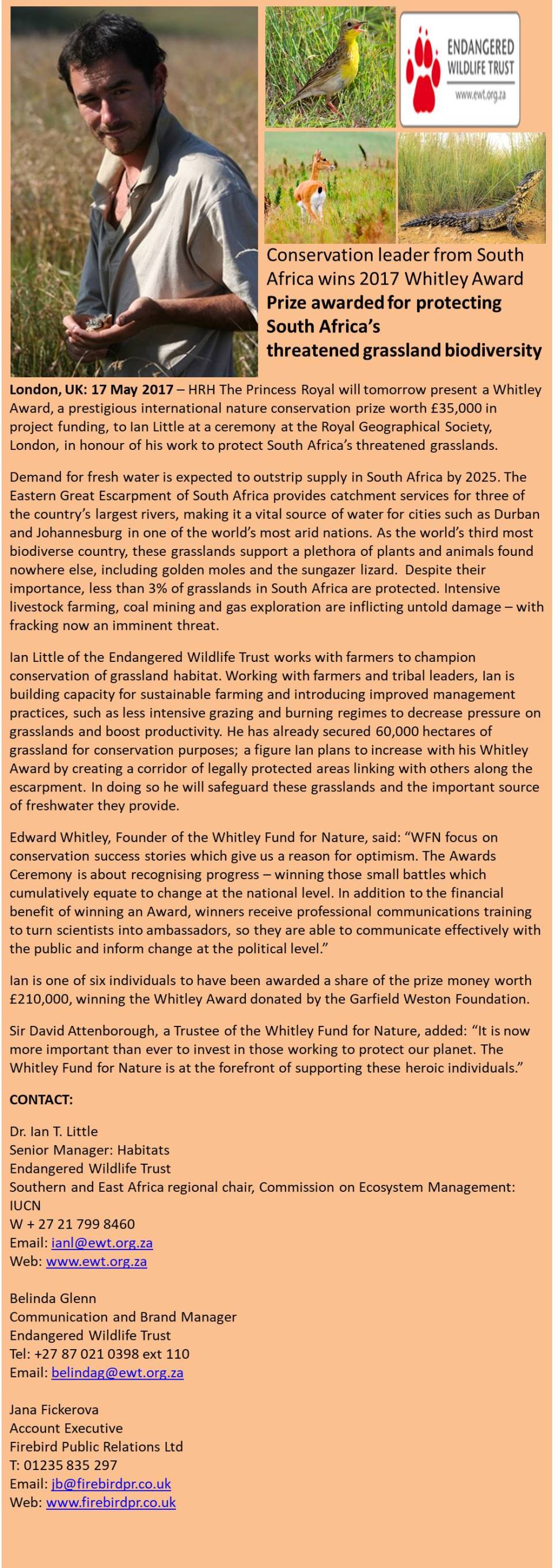
Dear colleagues,
I'm pleased to inform you that the joint SAAMBR / Birdlife SA / EWT submission for a WCC Conservation Campus training course titled
"Does awareness lead to action? Measuring the success of conservation communication" has been accepted.
It will be a four hour session, incorporating the Cornell University submission titled "News media in the conservation ecosystem: what role does it play, what role should it play?"
Only 24 were accepted from some 1500 Conservation Campus submissions around the World, so well done to Judy Mann & Simon Gear for putting the submission together!
Best regards
LARRY OELLERMANN
Chief Executive Officer

South African Association for Marine Biological Research
Tel: +27 (31) 328 8177 Cell: +27 (82) 8265644 Fax: +27 (31) 328 8188
1 King Shaka Avenue, Point, Durban 4001 KwaZulu-Natal South Africa
PO Box 10712 Marine Parade 4056 KwaZulu-Natal South Africa
E-mail: loellermann@ori.org.za
CYCAD POACHER SENTENCED TO 10 YEARS IN PRISON
7th July 2015
In a ground-breaking decision, and for the first time on record in the Eastern Cape and possibly in South Africa at large, an Encephalartos cycad poacher has been sentenced to ten years direct imprisonment by the Jansenville regional court.
The Endangered Wildlife Trust (the EWT) would like to commend the National Prosecuting Authority, Advocate Coetzee, and the members of the South African Police Service who arrested the aforementioned poacher and three others. This is a truly outstanding conclusion to this case and will hopefully send a strong message to would be perpetrators that it is not worth removing these endangered plants from the wild.
The case involved four poachers, arrested in 2014 for attempting to smuggle twelve Encephalartos lehmannii, the Karoo Cycad, to Johannesburg. The E. lehmannii is listed as a Protected species in the national list of Threatened or Protected Species, published on 23 February 2007. The matter, prosecuted by Advocate Coetzee in the Jansenville regional court, concluded on 24 June 2015, where the presiding officer, Magistrate Rene Esterhuize, sentenced three of the poachers (Shadrack Matambo, Desmond Manodawafa and Alex Khoza) to five years direct imprisonment and sentenced the fourth poacher (Sibusiso Khumalo) to ten years direct imprisonment for the same offences. Sibusiso Khumalo was sentenced to a lengthier jail term due to his previous two convictions for cycad poaching. The vehicle used in the commission of the offences was also seized and forfeited to the State.
The EWT is active in awareness raising activities and enforcement training programmes specific to cycads, hosting various training interventions with law enforcement officials from mixed enforcement agencies including the South African Police Service.
In South Africa the greatest threat facing cycads is the poaching of plants from wild populations to supply both domestic and international markets. Current statistics reflect the following in respect of the Encephalartos cycad species in South Africa: three are Extinct in the Wild; twelve are Critically Endangered (meaning the species faces an extremely high risk of extinction in the wild); four are Endangered (meaning these cycads face a high risk of extinction in the wild); nine are Vulnerable (meaning these cycads face a high risk of endangerment in the wild); and seven are Near Threatened (meaning these cycads are likely to become Endangered in the near future and the Encephalartos lehmannii falls within this category).
The EWT wholeheartedly supports the work of all parties involved in bringing these poachers to justice and looks forward to seeing more cases concluded like this one in the future.
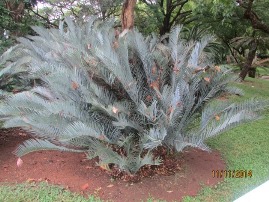
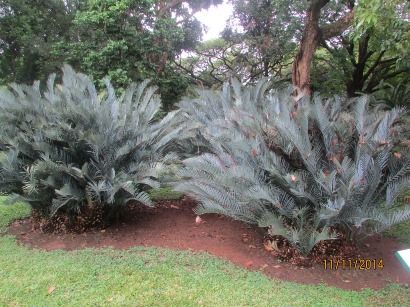
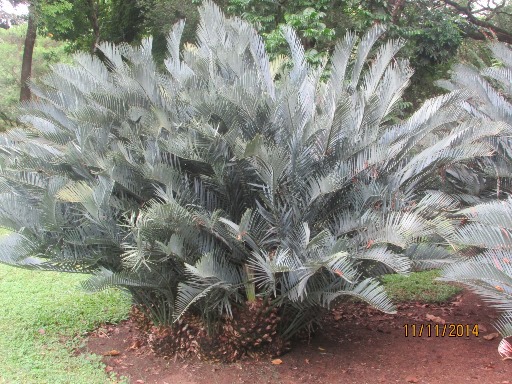
Encephalartos lehmannii, photos by Adam Pires
Contacts: Ashleigh Dore
Coordinator: Skills Development Programme
Endangered Wildlife Trust
Tel: +27 11 372 3600
ashleighd@ewt.org.za
and
Lillian Mlambo
Communications Manager
Endangered Wildlife Trust
Tel: +27 11 372 3600
lillianm@ewt.org.za
International Rhino Foundation |
|
|
|
|
2. Special Training & Equipment
Highly-trained and well-equipped rangers are key to winning the war against poaching. Rangers face heavily armed, highly organized and lethal opponents who ruthlessly slaughter rhinos and anyone who stands in their way. It’s not just a question of rangers being armed. It’s just as much about them being highly skilled and knowing that they have the best tools at their disposal to take on the enemy. Providing special training and essential equipment are integral components of Operation: STOP POACHING NOW. |
|
Poachers routinely attack in the dead of night, so night-vision goggles and infrared sensors have become anti-poaching necessities. Rangers are on especially high alert during the full moon — commonly referred to as the “poacher’s moon” — when poaching losses tend to be particularly high. This summer, unfortunately, there are three consecutive “supermoons.” The first was on July 12; the second will be on August 10; and the final one on September 9. Supermoons take place when the moon becomes full at the same time its orbit is closest to Earth — with extra brightness providing even more light under which poachers can kill. |
|
Rangers must also be in top physical condition to pursue criminals, which places very high priority on survival strategies for hydration, nutrition, thermal regulation and the treatment of injuries. The best equipped, most physically fit rhino ranger in the world, however, still needs proper training.
In the past, IRF has supported programs that included special training in field craft, animal and human tracking, firearm proficiency, night operations, camouflage, special equipment use, first aid, crime scene investigation, and working with dangerous species such as rhinos, lions, elephants and buffalo. As poachers become more aggressive and engage rangers with increasingly lethal weapons, training in field trauma medicine and providing emergency kits to sustain injured staff until they can be evacuated to the hospital have also become essential.
Your support can help ensure that the heroes in the field are well-trained and have the equipment they’ll need to get the upper hand against poachers in South Africa, Swaziland, Zimbabwe and other African countries where rhinos are most at risk.
Please give generously. Every gift, small or large, matters. Every gift allows us to do more. |
|
|
|
|
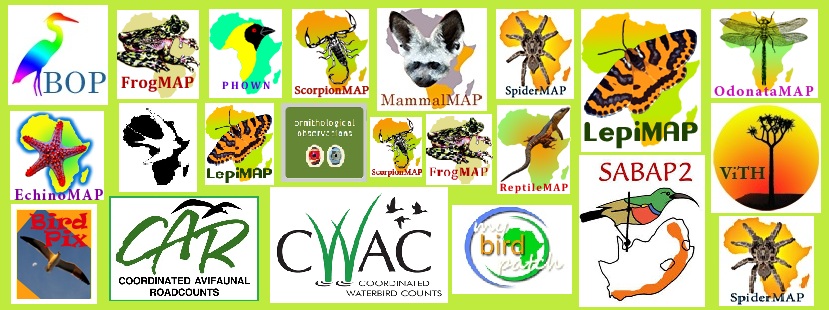
Dear Conservancies
We at the Animal Demography Unit are a conservation organisation with the goal of promoting an appreciation of nature and biodiversity in South Africa as well as the rest of Africa.
Our purpose is to provide a platform for all South Africans, and people from other African countries, to contribute to conservation projects (Citizen Science Projects) by taking photographs of animals and plants in the wild and submitting them to our Virtual Museum (http://vmus.adu.org.za/). These records help us to understand the distributions of species, how they are impacted by humans, and what actions are needed to protect them.
We have produced some of the most important publications for the conservation of birds, frogs, butterflies and other animals in the country. Our portfolio of projects is growing, and we would like to extend the reach of these projects to as many people as possible.
One of the ways we would like to promote our projects is through the conservation and tourism industry. Our natural heritage is one of our most important assets for tourism. We would like to ask if you would be willing to forward this email to your network of contacts to ask if they would be interested in learning more about us and contributing to our projects. Or you could print out the posters below (just click on them for pdf format) and put it up in your office or on a noticeboard. If you would like to become involved that would be fantastic! Here is an easy to follow slideshow that shows you step-by-step how to register with the ADU and start uploading photos to our Virtual Museum: http://www.slideshare.net/meganloftieeaton/how-to-submit-records-to-the-animal-demography-units-virtual-museums-28710898
You can also visit the ADU website, http://www.adu.org.za/, or Facebook Page at https://www.facebook.com/animal.demography.unit and have a look at the Virtual Museum website at http://vmus.adu.org.za/
We look forward to hearing from you.
Kind regards,
Megan Loftie-Eaton
LepiMAP Project Coordinator (Butterfly & Moth Mapping Project)
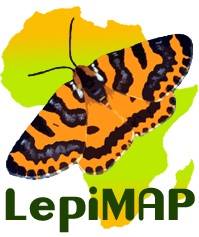
Animal Demography Unit (ADU) - Department of Biological Sciences
University of Cape Town - 7707 - South Africa

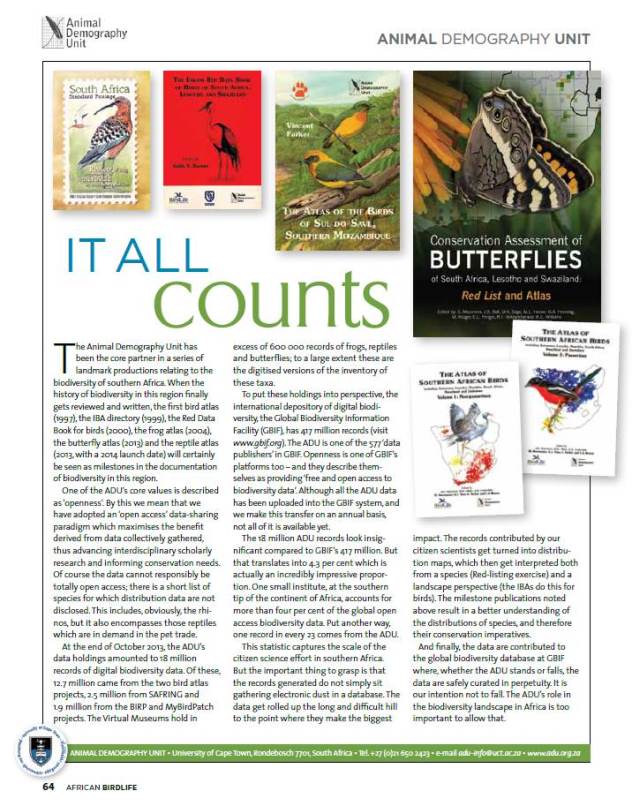
The Greater Kyalami Conservancy (GEKCO)
made this film to raise awareness about the destruction a proposed provincial road (K56) would have in the area.
http://www.youtube.com/watch?v=RX0UwbrI7mc
NACSSA's 10th Anniversay and Annual Conference September 2013
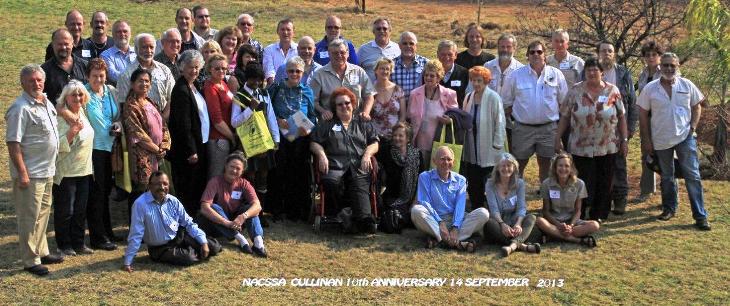
The Gauteng Conservancy & Stewardship Association combined with NACSSA to jointly celebrate their 10th Anniversary at ..... in Cullinan. Two days on conferences and worskhops culminated in a Gala dinner and Awards ceremony on Saturday night 14th September, 2013
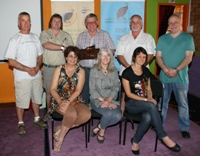
Enviropaedia Eco-Logic Awards in Association with SABC3 2012.
NACSSA receives two awards
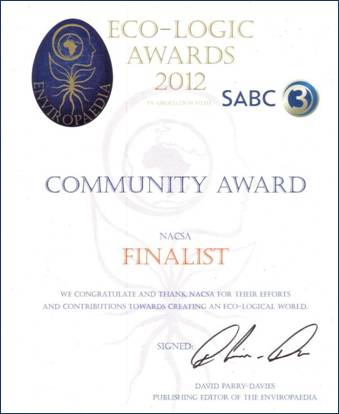
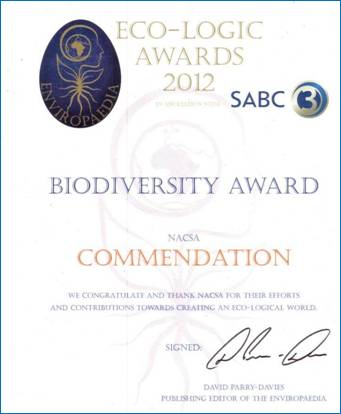
NACCSA at Gardenex in Gauteng March 2010




NACSSA at the Magaliesberg Biosphere Festival March 2010

Sanparks Kudu Awards 2009
The Awards Dinner was held on the 25th June at Gallagher Estate, Midrand, Gauteng.
NACSSA and Jean Lindsay, as an individual representative of NACSSA had both been selected as Finalists’ for the annual SANPARKS KUDU Awards.
Jean won a KUDU Award for Community Contribution by an individual.
NACSSA was awarded a merit award in the Category Community contribution
Jean, NACSSA and all its members are proud of you.
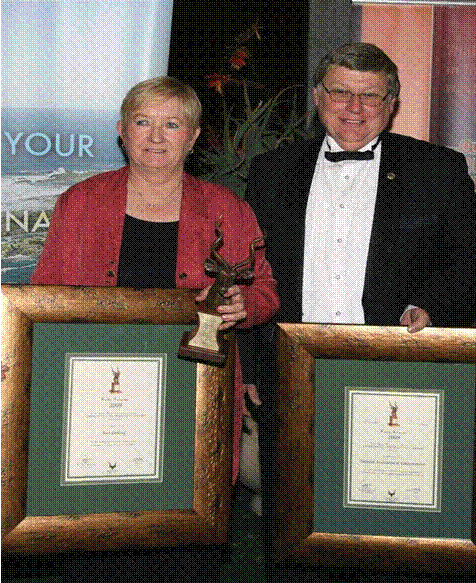
NACSSA Wins the Mail & Guardian
Greening the Future Award 2007
Winner – Environmental best practice in not-for-profit organisations
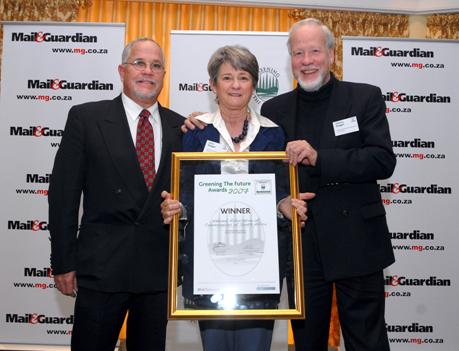
Ivan Parkes, Helen and Anthony Duigan Receiving the award on behalf of NACSSA
Lie of the land by Michelle Nel
Four years ago the National Association of Conservancies of South Africa (Nacssa) did not exist. Now it operates in seven provinces, with 750 conservancies, protecting about 30 million hectares of land. “That is five times more than SANParks and the provinces control, and we do it on no budget at all,” says Nacssa chairperson Anthony Duigan.
Nacssa is powerful because of the passion and commitment of its members. “If we are to strive for healthy communities within a healthy environment we have to protect the spaces that sustain us,” says Duigan. “Citizens are empowered to oppose powerful and elitist developers. We manage the land at community level. That’s our strength.” The Greening the Future judges commended the organisation for its “impressive network … making a big impact, despite limited resources”. The judges also felt “the conservancies kept plugging away at the sticky land management and ownership issues”.
The conservancies association is represented on the Wildlife and Environment Society’s NGO forum and is applying for World Conservation Union membership. Although the Northern Cape, Mpumalanga and Free state still have to formalise provincial conservancy associations, the movement is strong in these provinces.
“A conservancy is a community-based conservation initiative,” Duigan says. “It is a registered voluntary association of land owners and users who decide to ‘pool’ and manage their land in a sustainable manner without necessarily compromising their normal land use.”
Mpumalanga has a great deal of land under government protection, including Big Five reserves, the Blyde River Canyon area and the Barberton Nature Reserve. Negotiations are under way to form a provincial conservancy association.
Conservancies allow for frogging in the Chrissiesmeer area, birding in Wakkerstroom, black leopards in Lydenburg and fly fishing in the Kwena Basin. Although it has no formal provincial conservancy association, the Northern Cape is home to some of the most interesting conservancies in the country, including the Riverine Rabbit Brakrivier Conservancy in the Victoria West district. The conservancy covers 70 000ha of private farmland and is home to some of the estimated 250 riverine rabbits left in the wild today. The species is listed as critically endangered. The province also has a recycling project in the Vluytieskraal Conservancy in Orania and a Yellow fish Project in Warrenton.
The Free State does not have a provincial conservancy association, but it boasts some vital projects: the Clarens bio-region conservancy; the Kliprivier conservancy, which is part of the Seekoeivlei Ramsar Site; and the Vredefort Dome Conservancy in a vast crater formed by a meteorite, which was recently declared a World Heritage Site. The latter conservancy is threatened by the proposed development of three golf estates.
KwaZulu-Natal formed the country’s first provincial conservancy association in 1981. Besides being the custodian of Big Five reserves on savannah veld, the province boasts one of the most interesting conservancies: a rubbish dump. The Mariannhill landfill site has been “greened” under the guidance of rehabilitation specialist Richard Winn and now serves as one of the province’s foremost environmental education centres. School tours are taken to view biological control of invasive aliens, a constructed wetland, bird hide, grasslands, a leachate treatment plant and a gas-to-energy project. Nacssa biodiversity coordinator Jean Lindsay, who worked at Mariannhill for four years, explains that the conservancy is a working landfill. “The landfill rehabilitates as it goes along; each day at four o’clock rubbish is covered with soil to repel flies. The rubbish is being deposited now in ‘cell two’. Cell one has been fully covered and revegetated. “It looks like a mountain covered with trees and grass. A borrow pit near the top of the ‘mountain’, which collects rainwater, has been converted into a thriving wetland. Animals are returning to the site.”
Limpopo is setting a good example. The province’s new Environmental Management Act refers to “conservancies” as “protected resource use areas”, thereby giving them legal protection. The Waterberg Nature Conservancy has more than 150 000ha under protection. It employs more than 1 000 people and has become the platform from which the Waterberg Biosphere concept was launched. This biosphere reserve - one of only 400 in the world to be recognised by Unesco - is threatened by golf estates and hundreds of new housing developments. Golf courses use enormous amounts of water and destroy biodiversity. This threatens the very countryside that the developers are selling. “This is fraudulent marketing since it sells ‘countryside’ and then covers it up with kikuyu or concrete,” says Duigan.
Gauteng also features an interesting mix of conservancies, ranging from rural to urban, industrial, informal settlement and school conservancies. Many are threatened by development. “The wonderful thing about the conservancy concept is that it can apply to many different land uses from rural to industrial,” Duigan points out. “We are not anti-development, but we want appropriate development that is respectful of the countryside, the heritage and existing land use. For example, in the old suburbs of Jo’burg, such as Bertrams or Houghton, you should not destroy heritage buildings for development.” “Likewise, the Greater Kyalami Conservancy seeks to preserve the open spaces, giant bullfrog habitat and the horses. Linbro Park is a similar agricultural gem near the inner city. “We have estimated that there are 97 000ha within Gauteng’s urban edge that can be densified without affecting any green belts or conservancies. Developments must be correctly scaled to suit the quality of space and quality of life in any given area.
We believe in stewardship not consumerism. We aim to be stewards of our natural and cultural resources. Then our children will be able to enjoy them too.”
This category is sponsored by Nedbank
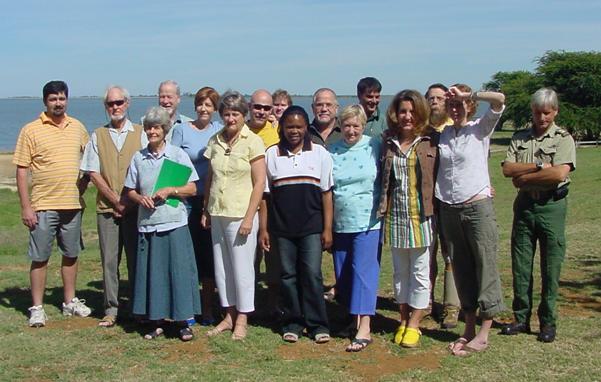
NACSSA Wins Prestigious WESSA Award 2005
On the evening of the 10th September, NACSSA was awarded a WESSA Presidential Award at the WESSA AGM held at the Seaview Hotel. Sue and I attended and accepted the award on behalf of NACSSA. I believe that the following wording on the certificate needs to be drawn to your attention as it shows us what we are part of: given "in recognition of their contribution to community driven conservation. NACSSA has promoted stewardship of natural resources amongst private and community based landowners throughout South Africa .We celebrate the achievement of their volunteer members who work in partnership with landowners, provincial authorities and other organisations, to ensure that natural resources are managed in an environmentally sustainable manner. "
Dr Vicky Ahlmann Conservationist of The Year 2005
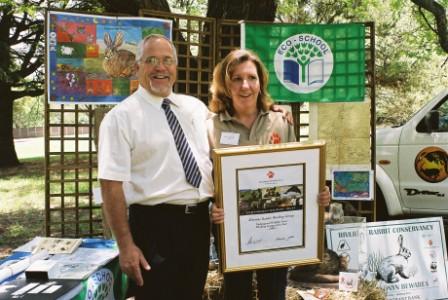
Ivan Parkes Chairman Gauteng Conservancy Association Congratulates Dr Vicky Ahlman
EWT Working Groups manned interactive displays outside the EWT offices which demonstrate their project goals and objectives and field activities. Posters designed and presented by the field workers gave insight into the personal experiences and lessons learned by each field worker in their unique environment.
Working Group staff manned these stands as members of the media, public and donors, together with other EWT staff, spent the morning visiting the stands to find out more about the wide variety of projects and conservation work being undertaken across the country.
We found this to be a most useful interaction as most their projects are being done in or around conservancies.
Various awards were handed out. The top award went to Dr Vicky Ahlmann, not only was she voted Conservationist of the Year her Riverine Rabbit Working Group display also received first prize.
Dr Vicky Ahlmann is the Manager of the Riverine Rabbit Working Group and also chairs the Loxton Conservancy and the Northern Cape Conservancy Association.



